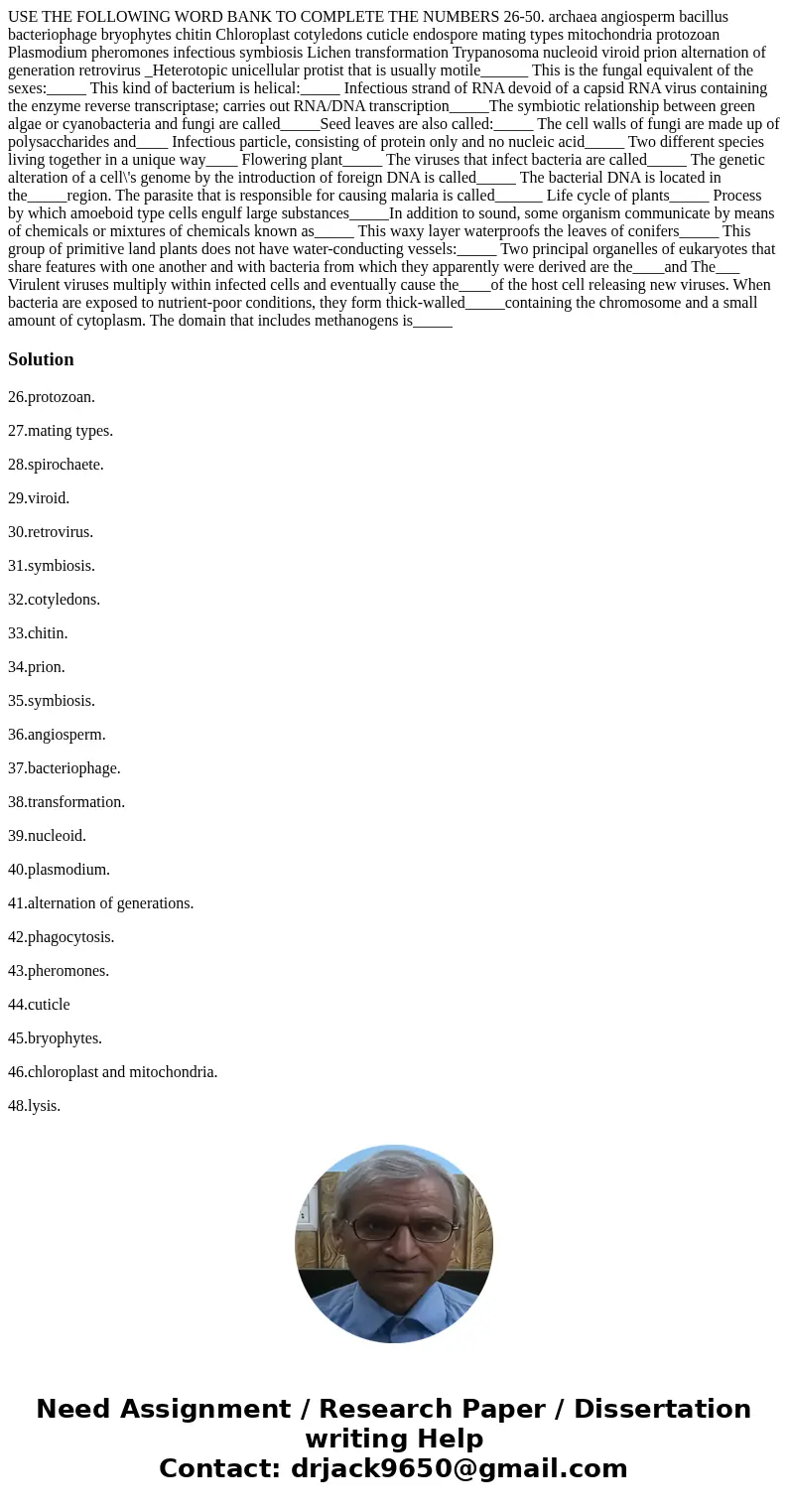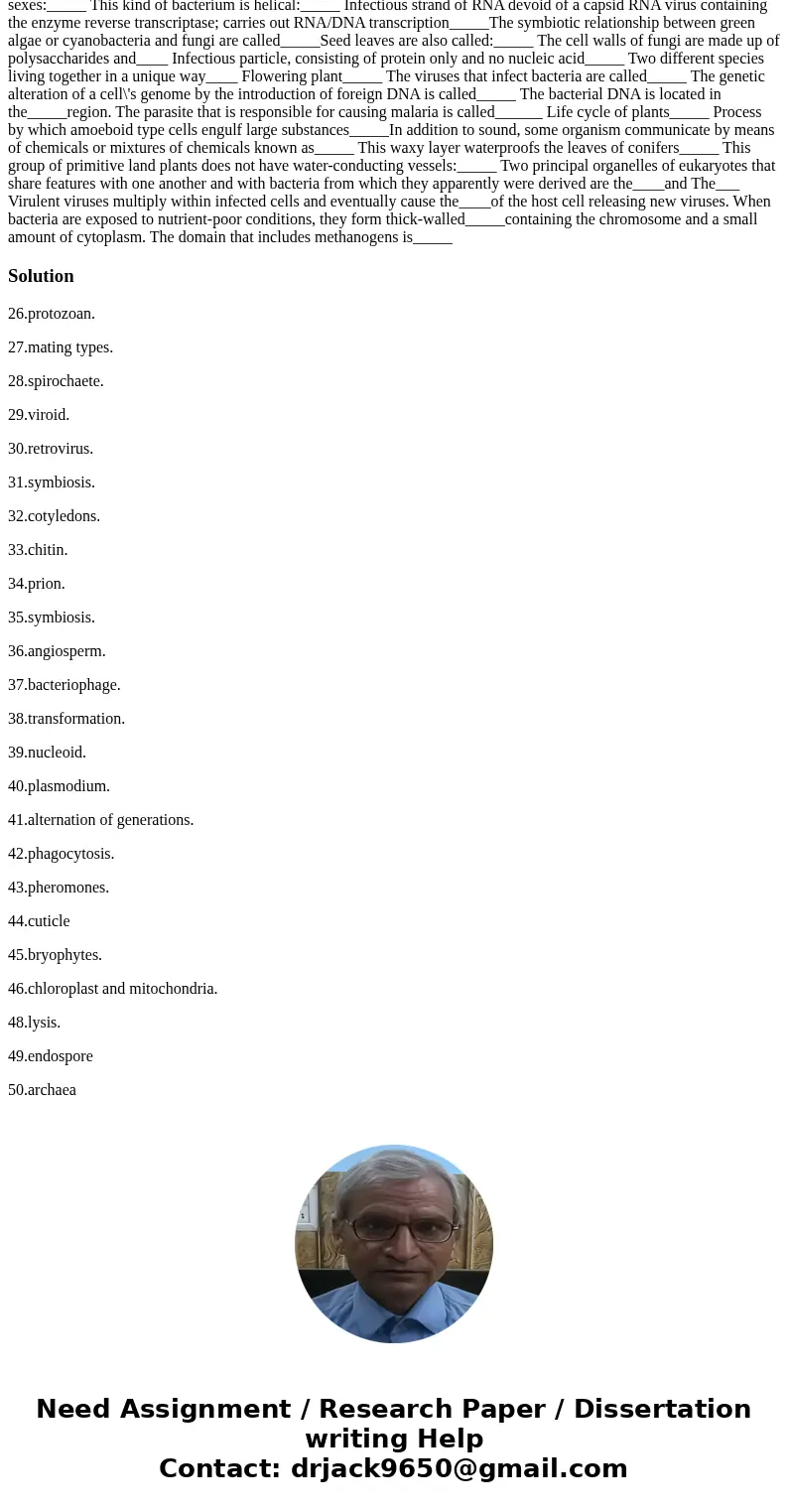USE THE FOLLOWING WORD BANK TO COMPLETE THE NUMBERS 2650 arc
USE THE FOLLOWING WORD BANK TO COMPLETE THE NUMBERS 26-50. archaea angiosperm bacillus bacteriophage bryophytes chitin Chloroplast cotyledons cuticle endospore mating types mitochondria protozoan Plasmodium pheromones infectious symbiosis Lichen transformation Trypanosoma nucleoid viroid prion alternation of generation retrovirus _Heterotopic unicellular protist that is usually motile______ This is the fungal equivalent of the sexes:_____ This kind of bacterium is helical:_____ Infectious strand of RNA devoid of a capsid RNA virus containing the enzyme reverse transcriptase; carries out RNA/DNA transcription_____The symbiotic relationship between green algae or cyanobacteria and fungi are called_____Seed leaves are also called:_____ The cell walls of fungi are made up of polysaccharides and____ Infectious particle, consisting of protein only and no nucleic acid_____ Two different species living together in a unique way____ Flowering plant_____ The viruses that infect bacteria are called_____ The genetic alteration of a cell\'s genome by the introduction of foreign DNA is called_____ The bacterial DNA is located in the_____region. The parasite that is responsible for causing malaria is called______ Life cycle of plants_____ Process by which amoeboid type cells engulf large substances_____In addition to sound, some organism communicate by means of chemicals or mixtures of chemicals known as_____ This waxy layer waterproofs the leaves of conifers_____ This group of primitive land plants does not have water-conducting vessels:_____ Two principal organelles of eukaryotes that share features with one another and with bacteria from which they apparently were derived are the____and The___ Virulent viruses multiply within infected cells and eventually cause the____of the host cell releasing new viruses. When bacteria are exposed to nutrient-poor conditions, they form thick-walled_____containing the chromosome and a small amount of cytoplasm. The domain that includes methanogens is_____

Solution
26.protozoan.
27.mating types.
28.spirochaete.
29.viroid.
30.retrovirus.
31.symbiosis.
32.cotyledons.
33.chitin.
34.prion.
35.symbiosis.
36.angiosperm.
37.bacteriophage.
38.transformation.
39.nucleoid.
40.plasmodium.
41.alternation of generations.
42.phagocytosis.
43.pheromones.
44.cuticle
45.bryophytes.
46.chloroplast and mitochondria.
48.lysis.
49.endospore
50.archaea


 Homework Sourse
Homework Sourse